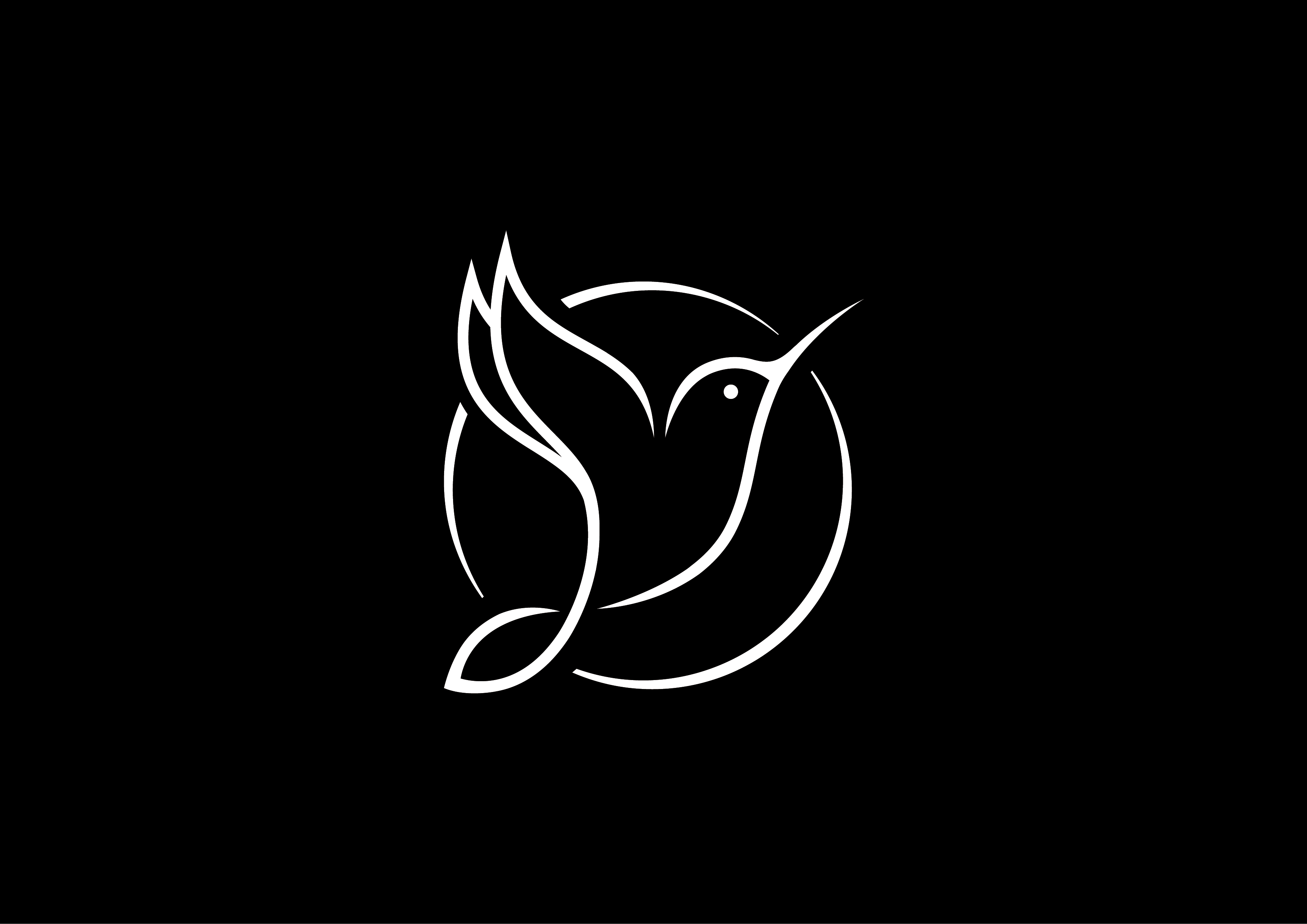[vc_row bg_check= »row-background-dark » dfd_overlay_color= »#353535″ force_equal_height_columns= »main_row » dfd_row_config= »full_width_small_paddings » bg_type= »bg_color » bg_override= »full » bg_color_value= »rgba(15,15,15,0.5) »][vc_column width= »1/6″ css= ».vc_custom_1674300750464{padding-top: 30px !important;padding-right: 100px !important;padding-left: 100px !important;background-color: rgba(0,0,0,0.01) !important;*background-color: rgb(0,0,0) !important;} » col_shadow= »box_shadow_enable:disable|shadow_horizontal:0|shadow_vertical:15|shadow_blur:50|shadow_spread:0|box_shadow_color:rgba(0%2C0%2C0%2C.35) » col_shadow_hover= »box_shadow_enable:disable|shadow_horizontal:0|shadow_vertical:15|shadow_blur:50|shadow_spread:0|box_shadow_color:rgba(0%2C0%2C0%2C.35) »][/vc_column][vc_column width= »2/6″ css= ».vc_custom_1674301029045{padding-right: 50px !important;background-color: rgba(15,15,15,0.01) !important;*background-color: rgb(15,15,15) !important;} » col_shadow= »box_shadow_enable:disable|shadow_horizontal:0|shadow_vertical:15|shadow_blur:50|shadow_spread:0|box_shadow_color:rgba(0%2C0%2C0%2C.35) » col_shadow_hover= »box_shadow_enable:disable|shadow_horizontal:0|shadow_vertical:15|shadow_blur:50|shadow_spread:0|box_shadow_color:rgba(0%2C0%2C0%2C.35) »][vc_custom_heading text= »Sauver la forêt tropicale
du Chocó-Darién en Équateur » font_container= »tag:h1|font_size:30|text_align:right|color:%23ffffff|line_height:1.3″ google_fonts= »font_family:Fira%20Sans%3A300%2C300italic%2Cregular%2Citalic%2C500%2C500italic%2C700%2C700italic|font_style:700%20bold%20italic%3A700%3Aitalic »][dfd_spacer screen_wide_resolution= »1280″ screen_wide_spacer_size= »50″ screen_normal_resolution= »1024″ screen_tablet_resolution= »800″ screen_mobile_resolution= »480″ screen_normal_spacer_size= »40″ screen_tablet_spacer_size= »30″ screen_mobile_spacer_size= »10″][/vc_column][vc_column width= »2/6″][dfd_spacer screen_wide_resolution= »1280″ screen_wide_spacer_size= »50″ screen_normal_resolution= »1024″ screen_tablet_resolution= »800″ screen_mobile_resolution= »480″ screen_normal_spacer_size= »40″ screen_tablet_spacer_size= »30″ screen_mobile_spacer_size= »10″][vc_custom_heading text= »Seule forêt tropicale humide du côté atlantique en Amérique du Sud, le Chocó-Darién s’étend du sud du Panama jusqu’au nord de l’équateur. C’est un des plus grands « hot spots« de biodiversité de la planète, de nombreuses espèces de plantes ou d’animaux ne vivent qu’ici. Je vous propose ici de suivre le travail d’une ONG qui se bat pour protéger ce joyau forestier unique au monde. » font_container= »tag:h2|font_size:18|text_align:left|color:%23ffffff|line_height:1.5″ google_fonts= »font_family:Raleway%3A100%2C200%2C300%2Cregular%2C500%2C600%2C700%2C800%2C900|font_style:300%20light%20regular%3A300%3Anormal »][vc_custom_heading text= »Maxime Aliaga » font_container= »tag:h2|font_size:20|text_align:left|color:%23ffffff » google_fonts= »font_family:Raleway%3A100%2C200%2C300%2Cregular%2C500%2C600%2C700%2C800%2C900|font_style:700%20bold%20regular%3A700%3Anormal »][dfd_spacer screen_wide_resolution= »1280″ screen_wide_spacer_size= »10″ screen_normal_resolution= »1024″ screen_tablet_resolution= »800″ screen_mobile_resolution= »480″ screen_normal_spacer_size= »10″ screen_tablet_spacer_size= »5″ screen_mobile_spacer_size= »5″][/vc_column][vc_column width= »1/6″][/vc_column][/vc_row][vc_row dfd_row_config= »full_width_content » dfd_row_responsive_enable= »dfd-row-responsive-enable » bg_type= »image » bg_image_new= »3043″ bg_image_repeat= »no-repeat » bg_image_posiiton= »100% » bg_override= »full » css= ».vc_custom_1674299218859{padding-top: 300px !important;padding-bottom: 300px !important;} » responsive_styles= »padding_top_mobile:100|padding_bottom_mobile:100″][vc_column col_shadow= »box_shadow_enable:disable|shadow_horizontal:0|shadow_vertical:15|shadow_blur:50|shadow_spread:0|box_shadow_color:rgba(0%2C0%2C0%2C.35) » col_shadow_hover= »box_shadow_enable:disable|shadow_horizontal:0|shadow_vertical:15|shadow_blur:50|shadow_spread:0|box_shadow_color:rgba(0%2C0%2C0%2C.35) »][/vc_column][/vc_row][vc_row full_height= »yes » dfd_row_config= »full_width_content » disable_element= »yes » bg_type= »image » bg_image_new= »3043″ bg_image_size= »contain » bg_image_posiiton= »100% » bg_override= »full »][vc_column width= »1/2″ css= ».vc_custom_1584722095539{margin-left: 100px !important;border-top-width: 20px !important;border-right-width: 20px !important;border-bottom-width: 20px !important;border-left-width: 20px !important;padding-top: 30px !important;padding-right: 30px !important;padding-left: 30px !important;background-color: rgba(0,0,0,0.48) !important;*background-color: rgb(0,0,0) !important;} »][vc_custom_heading text= »Sauver la forêt tropicale du Chocó-Darién » font_container= »tag:h1|font_size:30|text_align:left|color:%23ffffff|line_height:1.3″ google_fonts= »font_family:Playfair%20Display%3Aregular%2Citalic%2C700%2C700italic%2C900%2C900italic|font_style:700%20bold%20italic%3A700%3Aitalic »][vc_custom_heading text= »Seule forêt tropicale humide du côté atlantique en Amérique du Sud, le Chocó-Darién s’étend du sud du Panama jusqu’au nord de l’équateur. C’est un des plus grands « hot spots« de biodiversité de la planète, de nombreuses espèces de plantes ou d’animaux ne vivent qu’ici. Je vous propose ici de suivre le travail d’une ONG qui se bat pour protéger ce joyau forestier unique au monde. » font_container= »tag:h2|font_size:20|text_align:left|color:%23ffffff|line_height:1.8″ google_fonts= »font_family:Raleway%3A100%2C200%2C300%2Cregular%2C500%2C600%2C700%2C800%2C900|font_style:300%20light%20regular%3A300%3Anormal »][vc_custom_heading text= »Maxime Aliaga » font_container= »tag:h2|font_size:20|text_align:left|color:%23ffffff » google_fonts= »font_family:Raleway%3A100%2C200%2C300%2Cregular%2C500%2C600%2C700%2C800%2C900|font_style:700%20bold%20regular%3A700%3Anormal »][/vc_column][vc_column width= »1/2″][/vc_column][/vc_row][vc_row dfd_overlay_color= »#ffffff » dfd_row_config= »full_width_content_paddings » bg_type= »bg_color » bg_color_value= »#ffffff » css= ».vc_custom_1674059529604{padding-top: 20px !important;} »][vc_column width= »1/4″][/vc_column][vc_column width= »1/2″][dfd_spacer screen_wide_resolution= »1280″ screen_wide_spacer_size= »50″ screen_normal_resolution= »1024″ screen_tablet_resolution= »800″ screen_mobile_resolution= »480″ screen_normal_spacer_size= »40″ screen_tablet_spacer_size= »30″ screen_mobile_spacer_size= »10″][vc_custom_heading text= »Un « hot spot« de biodiversité » font_container= »tag:h2|font_size:30|text_align:center|line_height:32px » google_fonts= »font_family:Fira%20Sans%3A300%2C300italic%2Cregular%2Citalic%2C500%2C500italic%2C700%2C700italic|font_style:700%20bold%20regular%3A700%3Anormal »][dfd_spacer screen_wide_resolution= »1280″ screen_wide_spacer_size= »25″ screen_normal_resolution= »1024″ screen_tablet_resolution= »800″ screen_mobile_resolution= »480″ screen_normal_spacer_size= »10″ screen_tablet_spacer_size= »5″ screen_mobile_spacer_size= »5″][vc_column_text css= » »]Un « hot spot » de biodiversité est une zone naturelle très riche en espèces endémiques qui a subit une forte destruction de son habitat originel. En d’autres termes c’est une zone riche en animaux uniques qui est en voie de disparition. En effet, les forêts du Chocó-Darién abritent un grand nombre d’espèces qu’on ne trouve nulle par ailleurs et la pression humaine a fortement mis à mal cet écosystème si particulier et si important pour la planète. Il est donc nécessaire de préserver ce joyau naturel d’une importance capitale pour la planète.[/vc_column_text][dfd_spacer screen_wide_resolution= »1280″ screen_wide_spacer_size= »25″ screen_normal_resolution= »1024″ screen_tablet_resolution= »800″ screen_mobile_resolution= »480″ screen_normal_spacer_size= »10″ screen_tablet_spacer_size= »5″ screen_mobile_spacer_size= »5″][vc_single_image image= »9509″ img_size= »full » add_caption= »yes » alignment= »center »][dfd_spacer screen_wide_resolution= »1280″ screen_wide_spacer_size= »50″ screen_normal_resolution= »1024″ screen_tablet_resolution= »800″ screen_mobile_resolution= »480″ screen_normal_spacer_size= »40″ screen_tablet_spacer_size= »30″ screen_mobile_spacer_size= »10″][/vc_column][vc_column width= »1/4″][/vc_column][/vc_row][vc_row][vc_column width= »1/2″][vc_single_image image= »3052″ img_size= »900×600″ add_caption= »yes » alignment= »center »][dfd_spacer screen_wide_resolution= »1280″ screen_wide_spacer_size= »50″ screen_normal_resolution= »1024″ screen_tablet_resolution= »800″ screen_mobile_resolution= »480″ screen_normal_spacer_size= »40″ screen_tablet_spacer_size= »30″ screen_mobile_spacer_size= »10″][/vc_column][vc_column width= »1/2″][vc_single_image image= »3050″ img_size= »900×600″ add_caption= »yes » alignment= »center »][dfd_spacer screen_wide_resolution= »1280″ screen_wide_spacer_size= »50″ screen_normal_resolution= »1024″ screen_tablet_resolution= »800″ screen_mobile_resolution= »480″ screen_normal_spacer_size= »40″ screen_tablet_spacer_size= »30″ screen_mobile_spacer_size= »10″][/vc_column][/vc_row][vc_row full_height= »yes » dfd_row_config= »full_width_content » bg_type= »image » bg_image_new= »3054″ bg_image_posiiton= »100% » bg_override= »full »][vc_column][/vc_column][/vc_row][vc_row dfd_overlay_color= »#ffffff » dfd_row_config= »full_width_content_paddings » bg_type= »bg_color » bg_color_value= »#ffffff »][vc_column width= »1/4″][/vc_column][vc_column width= »1/2″][dfd_spacer screen_wide_resolution= »1280″ screen_wide_spacer_size= »50″ screen_normal_resolution= »1024″ screen_tablet_resolution= »800″ screen_mobile_resolution= »480″ screen_normal_spacer_size= »40″ screen_tablet_spacer_size= »30″ screen_mobile_spacer_size= »10″][vc_custom_heading text= »Un trésor menacé par la déforestation » font_container= »tag:h2|font_size:30|text_align:center » google_fonts= »font_family:Fira%20Sans%3A300%2C300italic%2Cregular%2Citalic%2C500%2C500italic%2C700%2C700italic|font_style:700%20bold%20regular%3A700%3Anormal »][dfd_spacer screen_wide_resolution= »1280″ screen_wide_spacer_size= »25″ screen_normal_resolution= »1024″ screen_tablet_resolution= »800″ screen_mobile_resolution= »480″ screen_normal_spacer_size= »10″ screen_tablet_spacer_size= »5″ screen_mobile_spacer_size= »5″][vc_column_text]La forêt du Chocó en Équateur est un véritable trésor de biodiversité, malheureusement, seulement 5 à 10% de sa forêt originelle subsiste aujourd’hui. Bien que classée en zone naturelle protégée, de nombreuses communautés locales y vivent encore. Depuis des années, la déforestation est un fléau qui dévaste cette région, causée par les coupes illégales de bois, les plantations d’huile de palme et le braconnage. Ces activités ont fragmenté la forêt en petits morceaux, perturbant l’équilibre des écosystèmes et la vie des animaux qui tentent de s’adapter aux changements brutaux.[/vc_column_text][dfd_spacer screen_wide_resolution= »1280″ screen_wide_spacer_size= »50″ screen_normal_resolution= »1024″ screen_tablet_resolution= »800″ screen_mobile_resolution= »480″ screen_normal_spacer_size= »40″ screen_tablet_spacer_size= »30″ screen_mobile_spacer_size= »10″][/vc_column][vc_column width= »1/4″][/vc_column][/vc_row][vc_row dfd_enable_overlay= »off » dfd_row_config= »full_width_content » parallax_content= »off » fadeout_row= »off »][vc_column column_bg_check= »column-background-dark »][vc_masonry_media_grid grid_id= »vc_gid:1720700577024-0396aafa-279e-1″ include= »3056,3057,3058″][/vc_column][/vc_row][vc_row dfd_overlay_color= »#ffffff » dfd_row_config= »full_width_content_paddings » bg_type= »bg_color » bg_color_value= »#ffffff »][vc_column width= »1/4″][/vc_column][vc_column width= »1/2″][dfd_spacer screen_wide_resolution= »1280″ screen_wide_spacer_size= »50″ screen_normal_resolution= »1024″ screen_tablet_resolution= »800″ screen_mobile_resolution= »480″ screen_normal_spacer_size= »40″ screen_tablet_spacer_size= »30″ screen_mobile_spacer_size= »10″][vc_custom_heading text= »Fondation pour la Conservation des Andes Tropicales » font_container= »tag:h2|font_size:30|text_align:center » google_fonts= »font_family:Fira%20Sans%3A300%2C300italic%2Cregular%2Citalic%2C500%2C500italic%2C700%2C700italic|font_style:700%20bold%20regular%3A700%3Anormal »][dfd_spacer screen_wide_resolution= »1280″ screen_wide_spacer_size= »25″ screen_normal_resolution= »1024″ screen_tablet_resolution= »800″ screen_mobile_resolution= »480″ screen_normal_spacer_size= »10″ screen_tablet_spacer_size= »5″ screen_mobile_spacer_size= »5″][vc_column_text]Depuis plus de 10 ans, l’ONG équatorienne FCAT se consacre à la protection de la forêt du Chocó, en travaillant main dans la main avec les communautés locales. Leur objectif est de protéger la faune et la flore de la réserve du Mache-Chindul, située dans la région du Chocó, au nord-ouest de l’Équateur. Grâce à des campagnes de sensibilisation efficaces, l’ONG a réussi à impliquer les communautés locales dans la préservation de leur espace naturel précieux.[/vc_column_text][dfd_spacer screen_wide_resolution= »1280″ screen_wide_spacer_size= »50″ screen_normal_resolution= »1024″ screen_tablet_resolution= »800″ screen_mobile_resolution= »480″ screen_normal_spacer_size= »40″ screen_tablet_spacer_size= »30″ screen_mobile_spacer_size= »10″][/vc_column][vc_column width= »1/4″][/vc_column][/vc_row][vc_row dfd_enable_overlay= »off » dfd_row_config= »full_width_content » parallax_content= »off » fadeout_row= »off »][vc_column column_bg_check= »column-background-dark »][vc_masonry_media_grid grid_id= »vc_gid:1720700577025-b074afcf-1737-0″ include= »3061,3063,3062″][dfd_spacer screen_wide_resolution= »1280″ screen_wide_spacer_size= »5″ screen_normal_resolution= »1024″ screen_tablet_resolution= »800″ screen_mobile_resolution= »480″ screen_normal_spacer_size= »5″ screen_tablet_spacer_size= »5″ screen_mobile_spacer_size= »5″][/vc_column][/vc_row][vc_row force_equal_height_columns= »off » dfd_row_config= »full_width_content » bg_type= »image » bg_image_new= »3060″ bg_image_repeat= »no-repeat » bg_image_size= »contain » bg_image_posiiton= »100% » bg_override= »browser_size »][vc_column][/vc_column][/vc_row][vc_row dfd_overlay_color= »#ffffff » dfd_row_config= »full_width_content_paddings » bg_type= »bg_color » bg_color_value= »#ffffff »][vc_column width= »1/4″][/vc_column][vc_column width= »1/2″][dfd_spacer screen_wide_resolution= »1280″ screen_wide_spacer_size= »50″ screen_normal_resolution= »1024″ screen_tablet_resolution= »800″ screen_mobile_resolution= »480″ screen_normal_spacer_size= »40″ screen_tablet_spacer_size= »30″ screen_mobile_spacer_size= »10″][vc_column_text]En plus de ses actions avec les communautés locales, FCAT travaille en partenariat avec l’université de Tulane (Louisiane, USA) et le laboratoire de biologie evolutionnaire du Dr.Karubian, pour étudier scientifiquement la biodiversité de cette zone. Une équipe pluridisciplinaire composée de scientifiques étrangers et d’assistants locaux étudient donc diverses communautés d’animaux, telles les oiseaux, les amphibiens, ou encore les insectes afin évaluer l’impact de la fragmentation forestière sur la faune sauvage.[/vc_column_text][dfd_spacer screen_wide_resolution= »1280″ screen_wide_spacer_size= »50″ screen_normal_resolution= »1024″ screen_tablet_resolution= »800″ screen_mobile_resolution= »480″ screen_normal_spacer_size= »40″ screen_tablet_spacer_size= »30″ screen_mobile_spacer_size= »10″][/vc_column][vc_column width= »1/4″][/vc_column][/vc_row][vc_row][vc_column][vc_single_image image= »3066″ img_size= »900×600″ add_caption= »yes » alignment= »center »][dfd_spacer screen_wide_resolution= »1280″ screen_wide_spacer_size= »50″ screen_normal_resolution= »1024″ screen_tablet_resolution= »800″ screen_mobile_resolution= »480″ screen_normal_spacer_size= »40″ screen_tablet_spacer_size= »30″ screen_mobile_spacer_size= »10″][/vc_column][/vc_row][vc_row dfd_overlay_color= »#ffffff » dfd_row_config= »full_width_content_paddings » bg_type= »bg_color » bg_color_value= »#ffffff »][vc_column width= »1/4″][/vc_column][vc_column width= »1/2″][dfd_spacer screen_wide_resolution= »1280″ screen_wide_spacer_size= »50″ screen_normal_resolution= »1024″ screen_tablet_resolution= »800″ screen_mobile_resolution= »480″ screen_normal_spacer_size= »40″ screen_tablet_spacer_size= »30″ screen_mobile_spacer_size= »10″][vc_custom_heading text= »Un travail de conservation récompensé » font_container= »tag:h2|font_size:30|text_align:center » google_fonts= »font_family:Fira%20Sans%3A300%2C300italic%2Cregular%2Citalic%2C500%2C500italic%2C700%2C700italic|font_style:700%20bold%20regular%3A700%3Anormal »][dfd_spacer screen_wide_resolution= »1280″ screen_wide_spacer_size= »25″ screen_normal_resolution= »1024″ screen_tablet_resolution= »800″ screen_mobile_resolution= »480″ screen_normal_spacer_size= »10″ screen_tablet_spacer_size= »5″ screen_mobile_spacer_size= »5″][vc_column_text]Au moment de mon reportage, Monica Gonzalez, biologiste équatorienne, dirigeais l’ONG avec une énergie débordante et une passion toujours aussi grande. Son dévouement et sa motivation inaltérables ont permis d’améliorer la condition de vie des communautés en préservant leurs milieux naturels. Elle a notamment été récompensée au niveau international pour son engagement, en rapportant le Whitley Found for Nature (2014) et le prix Buffet Award du National Géographic (2015), deux prix qui récompensent les meilleurs projets de conservation dans le monde.[/vc_column_text][dfd_spacer screen_wide_resolution= »1280″ screen_wide_spacer_size= »50″ screen_normal_resolution= »1024″ screen_tablet_resolution= »800″ screen_mobile_resolution= »480″ screen_normal_spacer_size= »40″ screen_tablet_spacer_size= »30″ screen_mobile_spacer_size= »10″][/vc_column][vc_column width= »1/4″][/vc_column][/vc_row][vc_row][vc_column][vc_separator border_width= »2″][/vc_column][/vc_row][vc_row dfd_overlay_color= »#ffffff » dfd_row_config= »full_width_content_paddings » bg_type= »bg_color » bg_color_value= »#ffffff »][vc_column width= »1/4″][/vc_column][vc_column width= »1/2″][ult_content_box bg_color= »#5b5b5b » box_shadow= »horizontal:px|vertical:px|blur:px|spread:px|style:none| » hover_box_shadow= »horizontal:px|vertical:px|blur:px|spread:px|style:none| »][dfd_spacer screen_wide_resolution= »1280″ screen_wide_spacer_size= »50″ screen_normal_resolution= »1024″ screen_tablet_resolution= »800″ screen_mobile_resolution= »480″ screen_normal_spacer_size= »40″ screen_tablet_spacer_size= »30″ screen_mobile_spacer_size= »10″][vc_column_text css= ».vc_custom_1674470705815{padding-right: 50px !important;padding-left: 50px !important;} »]Durant l’été 2016, après avoir travaillé en Papouasie-Nouvelle-Guinée sur un projet du laboratoire du Dr.Karubian, j’ai été mandaté par celui-ci pour aller en Équateur faire une reportage et un film sur le travail de conservation de FCAT. J’ai passé plusieurs mois avec les scientifiques et les équipes locales pour documenter leur travail. J’ai ainsi produit ce petit film (en anglais) pour promouvoir leur activités.[/vc_column_text][dfd_spacer screen_wide_resolution= »1280″ screen_wide_spacer_size= »50″ screen_normal_resolution= »1024″ screen_tablet_resolution= »800″ screen_mobile_resolution= »480″ screen_normal_spacer_size= »40″ screen_tablet_spacer_size= »30″ screen_mobile_spacer_size= »10″][/ult_content_box][/vc_column][vc_column width= »1/4″][/vc_column][/vc_row][vc_row][vc_column][dfd_spacer screen_wide_resolution= »1280″ screen_wide_spacer_size= »20″ screen_normal_resolution= »1024″ screen_tablet_resolution= »800″ screen_mobile_resolution= »480″ screen_normal_spacer_size= »20″ screen_tablet_spacer_size= »10″ screen_mobile_spacer_size= »5″][vc_video align= »center » link= »https://www.youtube.com/watch?v=GLN4SC-DrWo&t=4s »][dfd_spacer screen_wide_resolution= »1280″ screen_wide_spacer_size= »50″ screen_normal_resolution= »1024″ screen_tablet_resolution= »800″ screen_mobile_resolution= »480″ screen_normal_spacer_size= »40″ screen_tablet_spacer_size= »30″ screen_mobile_spacer_size= »10″][/vc_column][/vc_row][vc_row][vc_column][dfd_spacer screen_wide_resolution= »1280″ screen_wide_spacer_size= »50″ screen_normal_resolution= »1024″ screen_tablet_resolution= »800″ screen_mobile_resolution= »480″ screen_normal_spacer_size= »40″ screen_tablet_spacer_size= »30″ screen_mobile_spacer_size= »10″][new_team_member module_animation= »transition.fadeIn » team_member_photo= »3421″ team_member_img_width= »300″ team_member_img_height= »300″ custom_fonts= »font_family:Montserrat%3Aregular%2C700|font_style:700%20bold%20regular%3A700%3Anormal » shadow= »show » soc_icons_hover= »2″ use_google_fonts= »yes » main_layout= »layout-02″ team_member_name= »Maxime Aliaga » team_member_job_position= »Photographe de nature » team_member_description= »Je suis photographe de nature professionnel et ambassadeur CANON Europe. Je publie des articles sur la faune sauvage et sa conservation dans la presse et différents médias. Durant mes expéditions, je suis un témoin privilégié de la nature sauvage et je m’efforce par mon travail de partager sa beauté mais aussi ses enjeux de conservation.
J’accompagne aussi des voyages photos au quatre coins du globe pour partager avec vous mes connaissances sur la nature ainsi que sur la technique photo. » title_font_options= »tag:div|font_size:20″ subtitle_font_options= »tag:div|font_size:18|font_style_italic:1″ font_options= »tag:div|font_size:18″ facebook= »https://www.facebook.com/MaximeAliaga/ » instagram= »https://www.instagram.com/maxime_aliaga/ »][dfd_spacer screen_wide_resolution= »1280″ screen_wide_spacer_size= »50″ screen_normal_resolution= »1024″ screen_tablet_resolution= »800″ screen_mobile_resolution= »480″ screen_normal_spacer_size= »40″ screen_tablet_spacer_size= »30″ screen_mobile_spacer_size= »10″][/vc_column][/vc_row]



